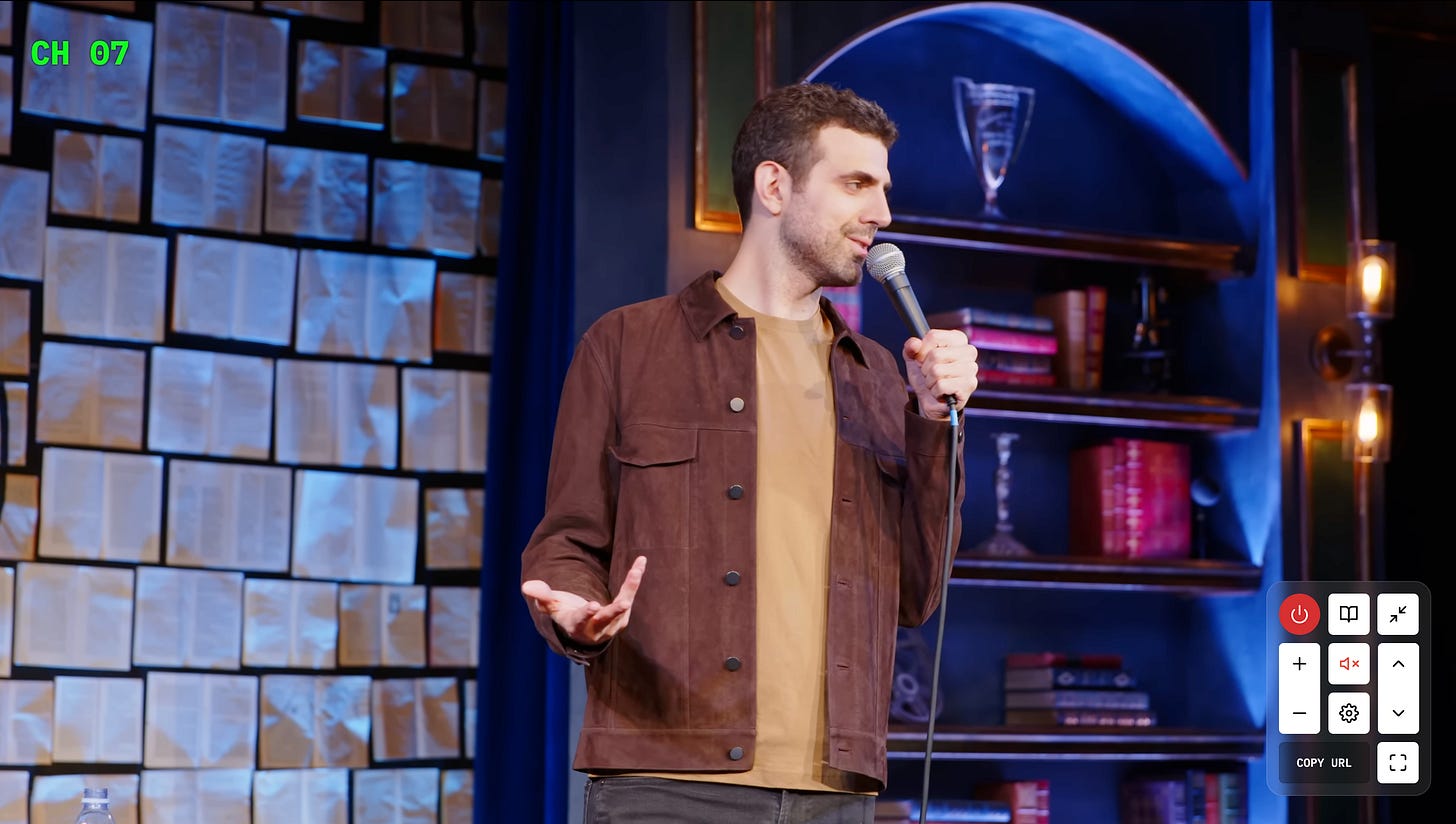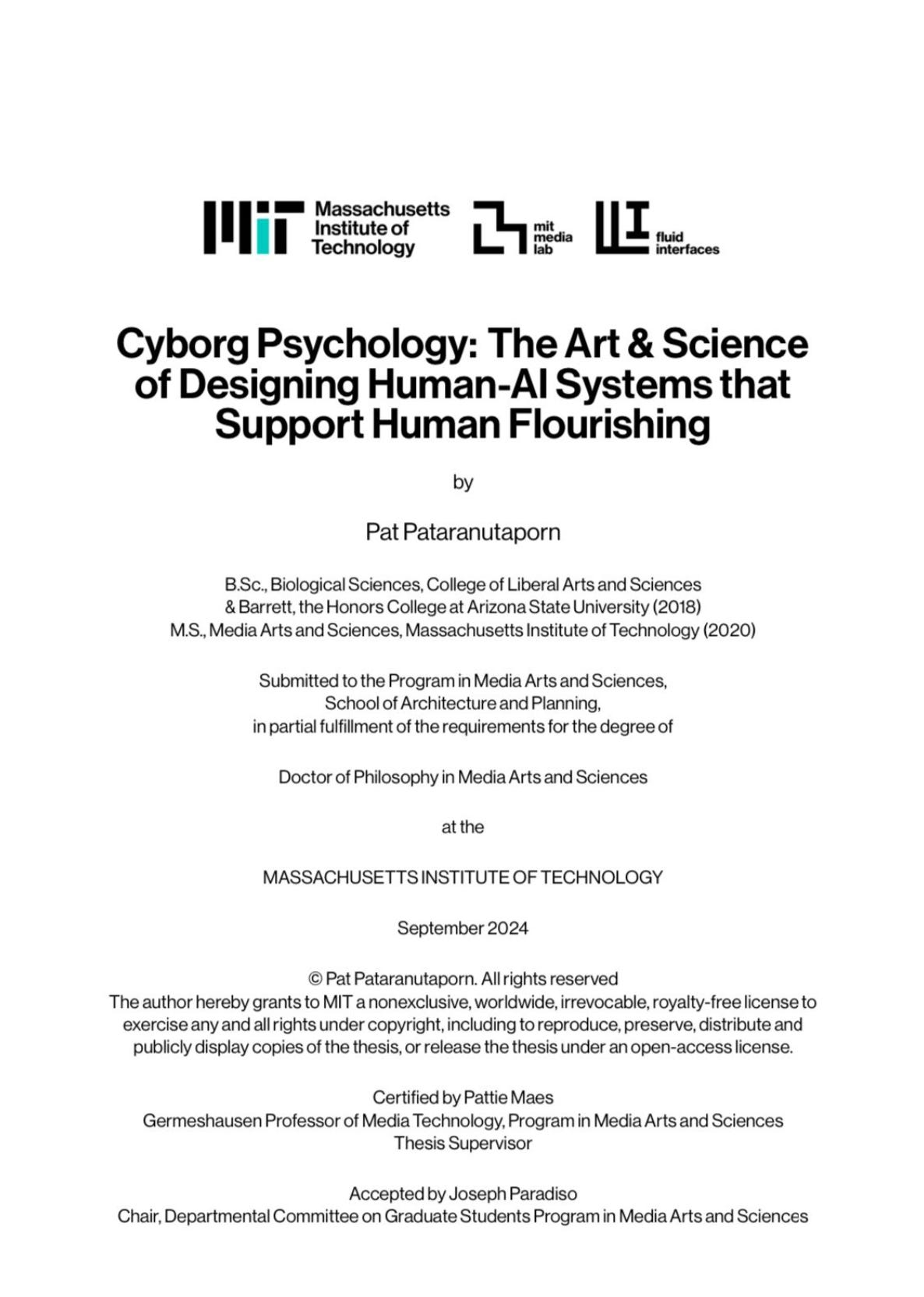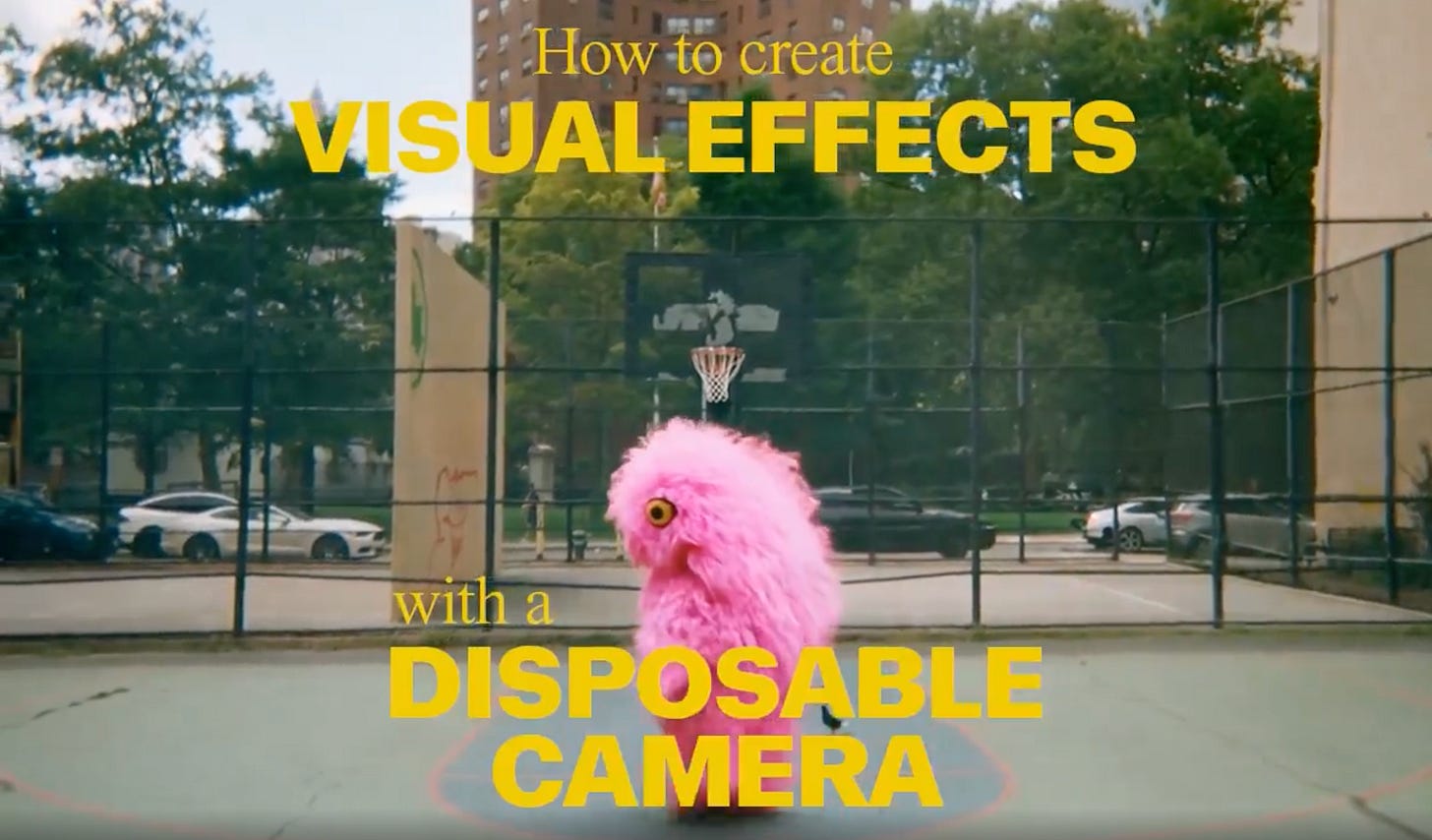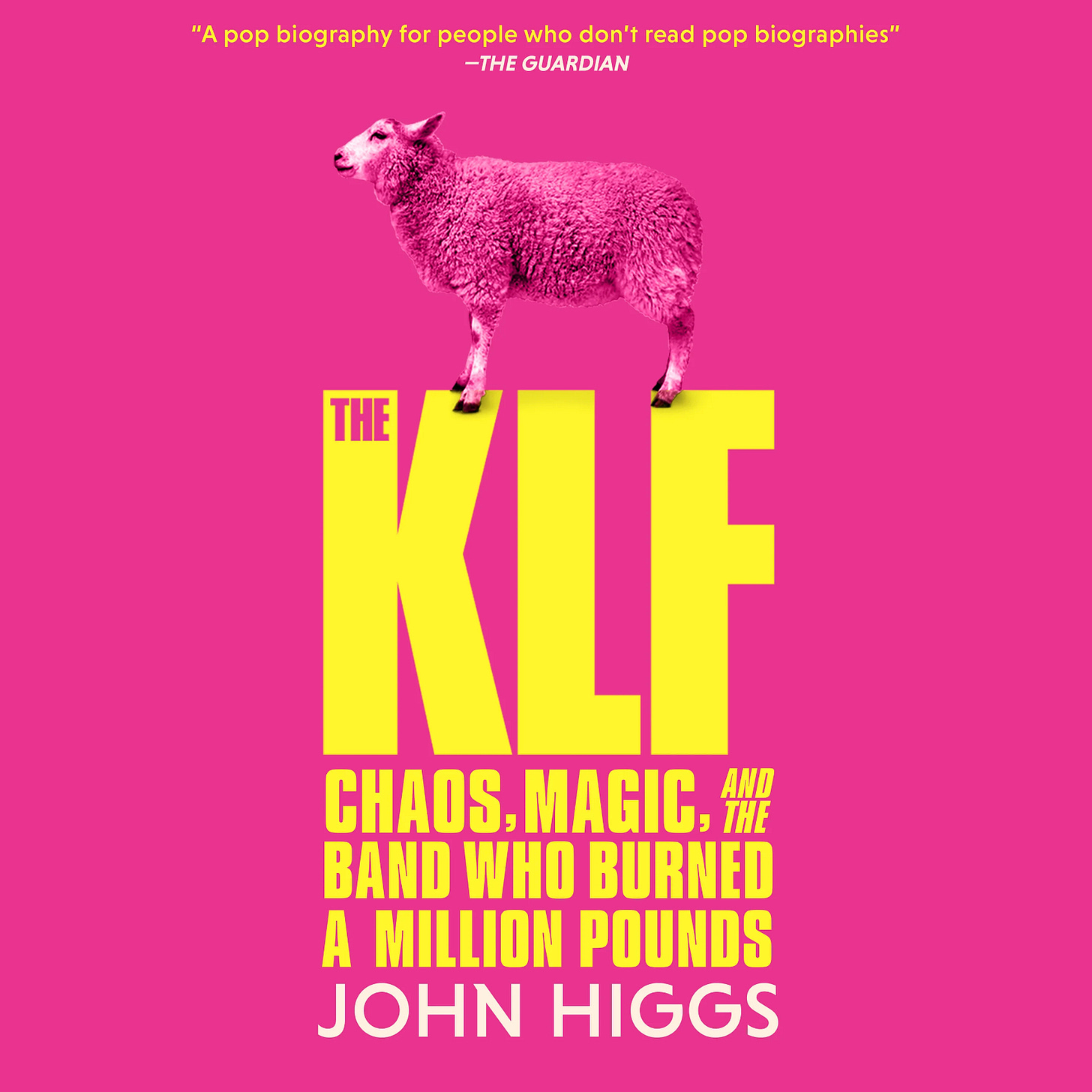Hey there, 👋🏼
I’ve been meaning to launch this newsletter for a while now, but as life often does, it got in the way. Now, with a bit of downtime during my paternity leave, I finally feel ready to hit send. Becoming a parent brings its own brand of chaos, and in that space, I’ve found a renewed appreciation for creativity, innovation, and how we balance both with life’s unpredictability.
So, welcome to the very first edition of Input is Output – a space where we’ll explore ideas, technologies, and thought-provoking perspectives shaping our future. If you’re into innovation, unconventional thinking, and a good helping of curiosity, you’re in the right place.
I’m sure the format will change over time; from themes to essays, collections of links, integrations with other mediums, and I find better ways to bring this to life.
You are probably wondering about the name… Input is Output is based on the idea that what we consume - whether it’s ideas, insights, or experience - shapes what we create and share with the world. Innovation doesn’t happen in isolation; it’s a result of the things we take in and how we process them. This newsletter is about exploring the fascinating relationship between the inputs that inspire us and the outputs we generate, whether in technology, creativity, or just everyday problem-solving.
Why a lightning bolt? Well, I didn’t want to use a lightbulb (too obvious) and as I started to think about symbols and icons, the lightning bolt sort of stuck out and I started to see it used widely - for example in the Apple ecosystem it represents charging your device and that made me smile. In symbolism, the bolt of lightning is a traditional symbol of sudden illumination and the destruction of ignorance and that appealed on a more philosophical level.
Why bother writing? Writing helps me think more clearly by forcing me to organise my thoughts and make sense of the ideas swirling in my head. When I put pen to paper (or fingers to keyboard), I’m able to reflect, giving structure to concepts that might otherwise remain scattered. It’s in the process of writing that connections emerge, allowing me to see patterns, challenge assumptions, and clarify my perspective. The act of writing also creates a space for deeper thinking - helping me to refine my ideas, explore new angles, and ultimately understand them more fully.
Ok. I feel like I’m waffling… Shall we get started?
Here is what caught my eye in the last week:
⚡ The AI Dilemma: Navigating the Road Ahead
In today’s fast-paced world of artificial intelligence (AI), the conversation about its growth and use is more crucial than ever. Tristan Harris, co-founder and executive director of the Center for Humane Technology, has emerged as a key figure in discussing the ethical and societal impacts of AI. In his recent talk at the AI for Good Global Summit, titled “The AI Dilemma: Navigating the Road Ahead,” Harris explores the complex and pressing issues that AI technologies present.
Harris highlights the dangerous incentive structures that currently define AI development. He argues that the race to deploy AI capabilities as quickly as possible, driven by competitive pressures among tech companies, is leading to a scenario where safety and ethical considerations are often sidelined. This “race to the bottom” is reminiscent of the early days of social media, where the focus on engagement led to widespread societal issues such as misinformation and addiction.
Harris warns “No matter how high the skyscraper of benefits that AI assembles, if it can also be used to undermine the foundation of society upon which that skyscraper depends, it won’t matter how many benefits there are.”
In addition to spending a lot of time reading through all the resources from the Center for Humane Technology, I strongly recommend spending some time at the Leverhulme Centre for the Future of Intelligence based at Cambridge University. Both are looking at how we address the challenges and opportunities posed by AI.
⚡YTCH: Reimagining YouTube as traditional broadcast TV
If you spend as much time as I do watching YouTube for entertainment, inspiration and tutorials, you’ll appreciate the genius of YTCH. On entering the website (best viewed on desktop) a random channel number will be playing. Showing my age here but imagine turning on the TV in the 80’s/90’s before Sky / Foxtel, Tivo and IQ.
There are 24 channels on the site, each represents a different category; Food, Gaming, UFC, Politics and so on.
The best part is that a channel doesn’t pause when you switch away from it. It’s always running, so if you flip away, you’ll miss what is playing. Just like the old days. The simplicity of the interface and the nostalgic aspect of it makes me question why it hasn’t been done before. I love it!
⚡ Cyborg Psychology: The Art & Science of Designing Human-AI Systems that Support Human Flourishing
This dissertation from Pat Pataranutaporn Ph.d, a technologist and a researcher at the Massachusetts Institute of Technology (MIT) explores AI's potential to enhance human flourishing through Wonder, Wisdom and Wellbeing, outlining Human-AI systems that can positively influence each area.
I find the concept of “Cyborg Psychology” fascinating because it explores the deeper psychological implications of how humans interact with AI. As AI becomes more integrated into everyday life, this interdisciplinary approach emphasises not just functionality, but how AI can be designed to support human growth, motivation, and critical thinking.
The blend of psychology, human-computer interaction, and behavioral science offers a fresh perspective on creating AI systems that enhance rather than replace human capabilities
⚡ Runway: Gen-3 Alpha and a disposable camera
Runway’s demo of creating visual effects with a disposable camera and Gen-3 Alpha really caught my attention. Not just because of the AI workflow, but because people are starting to explore and understand the real world limitations of using a physical medium with a digital one, to create something new and unique, that anchors to a real time and place.
Generative art (or anything generative for that matter) needs that anchor - some kind of story that connects to human imagination - without it, all we are creating is a bunch of fodder that no one has any real reason to pay attention to.
I’m looking forward to trying this for myself as I recently bought a Kodak reusable 35mm camera and some Trix400 film with a view to capturing my son on something other than a iPhone. This idea gives me a another reason to get out and play. I’ll post some results in the following weeks
⚡ Magie: A Neobank on WhatsApp
For a little dose of Brazilian creativity, ahead of me joining the Australian Brazilian Chamber of Commerce next week to discuss all things AI (more on that next week), I’ve been diving into Magie, the first bank on WhatsApp or at least the first smart account powered by text based chat.
The design approach of Magie is one of the most innovative I’ve come across recently - think of it as a window into a future where technology enhances rather than overshadows. Simply post photos, forward messages or text to Magie to convert to Pix payments to manage all your daily banking needs.
We are a long way off anything close to this here in Australia and some might argue if there is really a need for something like this, but chat and AI agents aren’t going away, this feels like a natural step especially when you consider the possibilities with native wallet integration.
⚡ The KLF: Chaos, Magic and the Band who Burned a Million Pounds
The early 90s were a strange time for music. I was 16 years old, I remember liking much of the music at the time but there were some huge tracks that stuck with me; The Shamen's ‘Ebenezer Goode’, Snap’s ‘Rhythm is a Dancer’ and Haddaway’s ‘What is Love?’ but I also clearly remember hearing KLF’s ‘What Time is Love’ and ‘3AM Eternal’ and listening to them on repeat. It was around this time, August 23rd 1994 to be precise, that they decided it would be a good idea to burn £1 million! Interestingly, they never really had a reason why…
The book looks to answer the key question: "Why did the KLF burn a million pounds in a disused boathouse on the isle of Jura in Scotland?" but this not your usual music biography. Nor is it just the story of The KLF.
Through the lens of the burning of the £1 million Higgs takes us on a strange and magical journey through philosophical ideas that influenced band mates Bill Drummond and Jimmy Cauty including quantum physics, religion, conspiracy theories, art, magic and Doctor Who.
It is a brilliant, thought-provoking, laugh-out-loud funny, and fascinating book.
And finally, as an owner of two Border Collies, this made me smile. It may or may not remind me of a few too many group brainstorms... Watch closely:
That’s it for this edition of Input is Output! Remember, innovation isn’t about knowing all the answers - it’s about staying curious and letting the world surprise you.
Until next time,
James
Feel free to share this with someone who loves thinking differently! Also, I’d love to hear what’s caught your eye recently and any feedback - send me your thoughts or anything you think belongs in the next edition.






